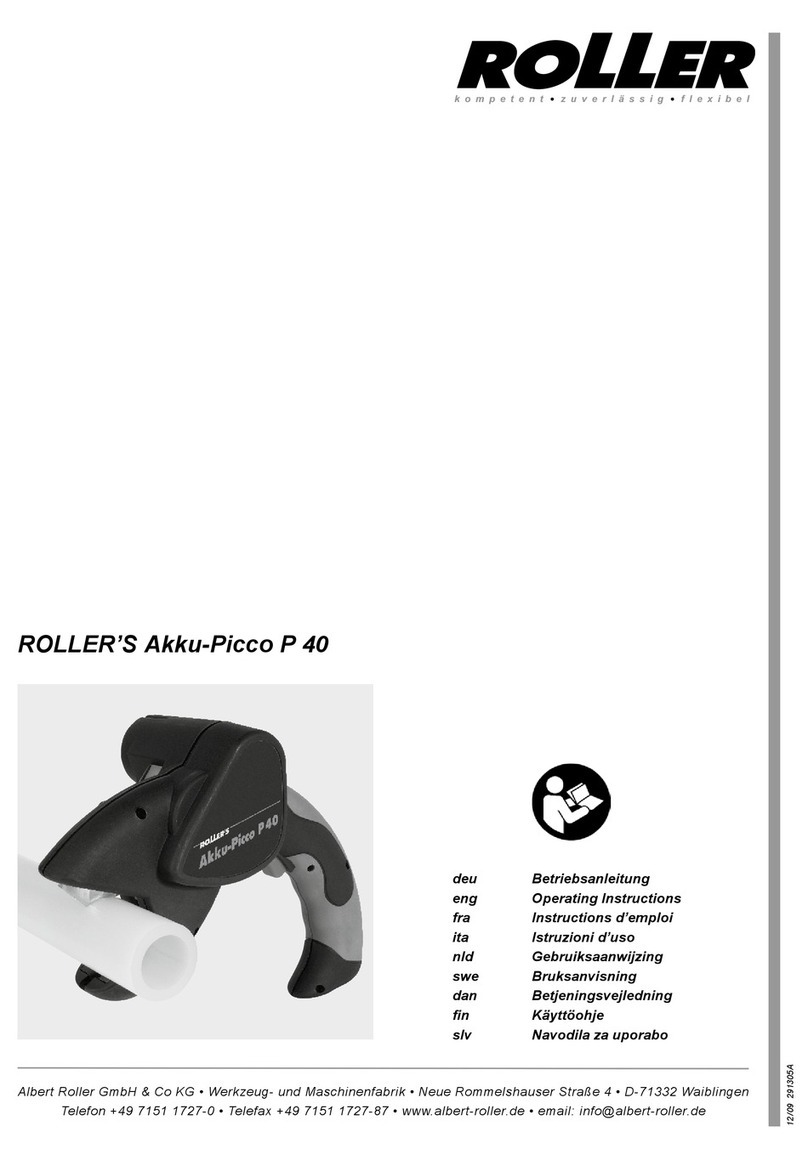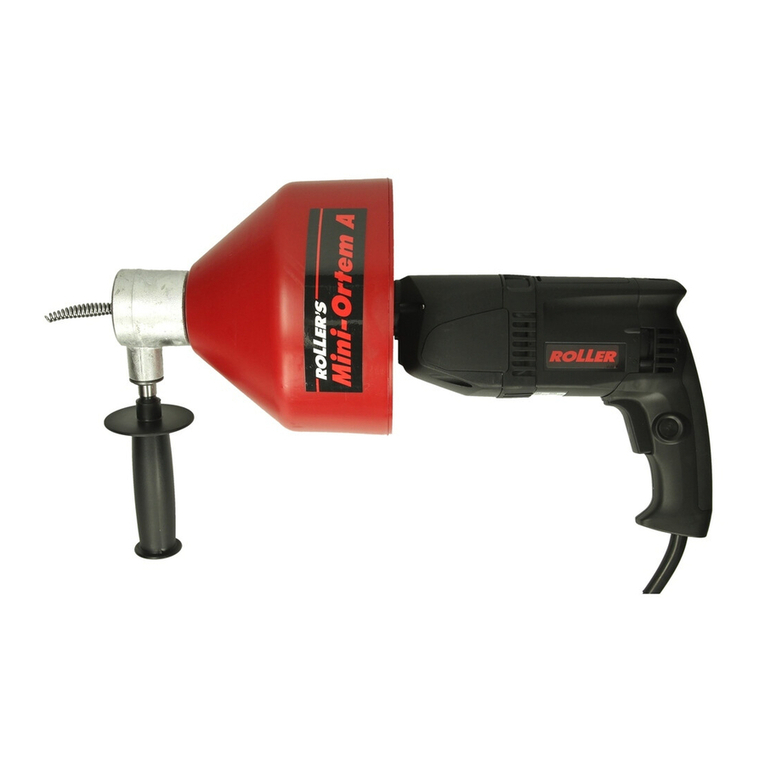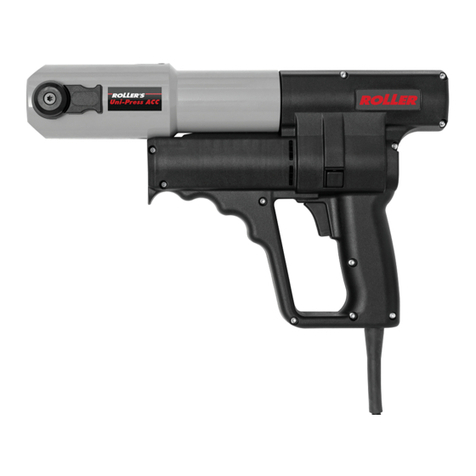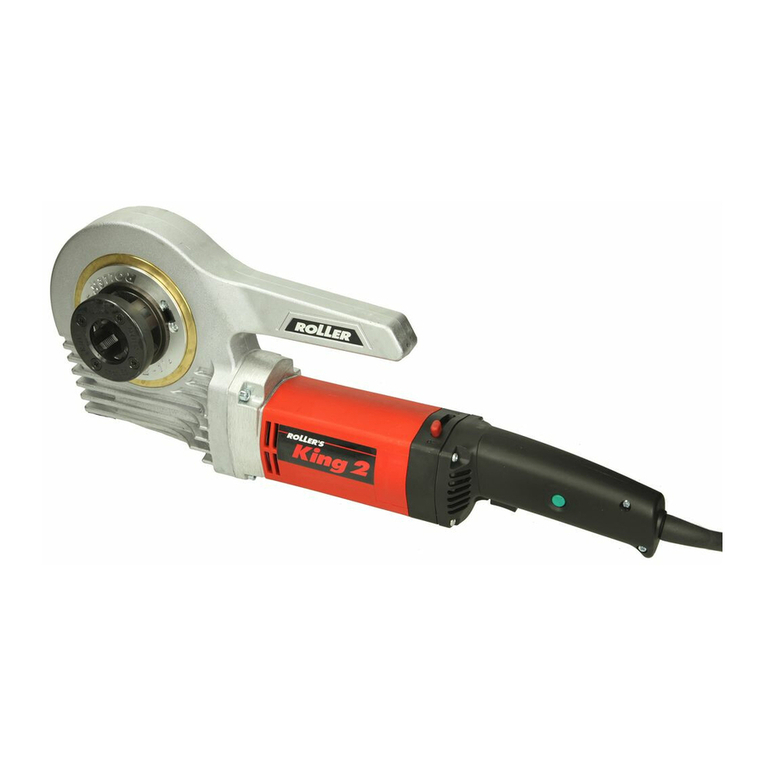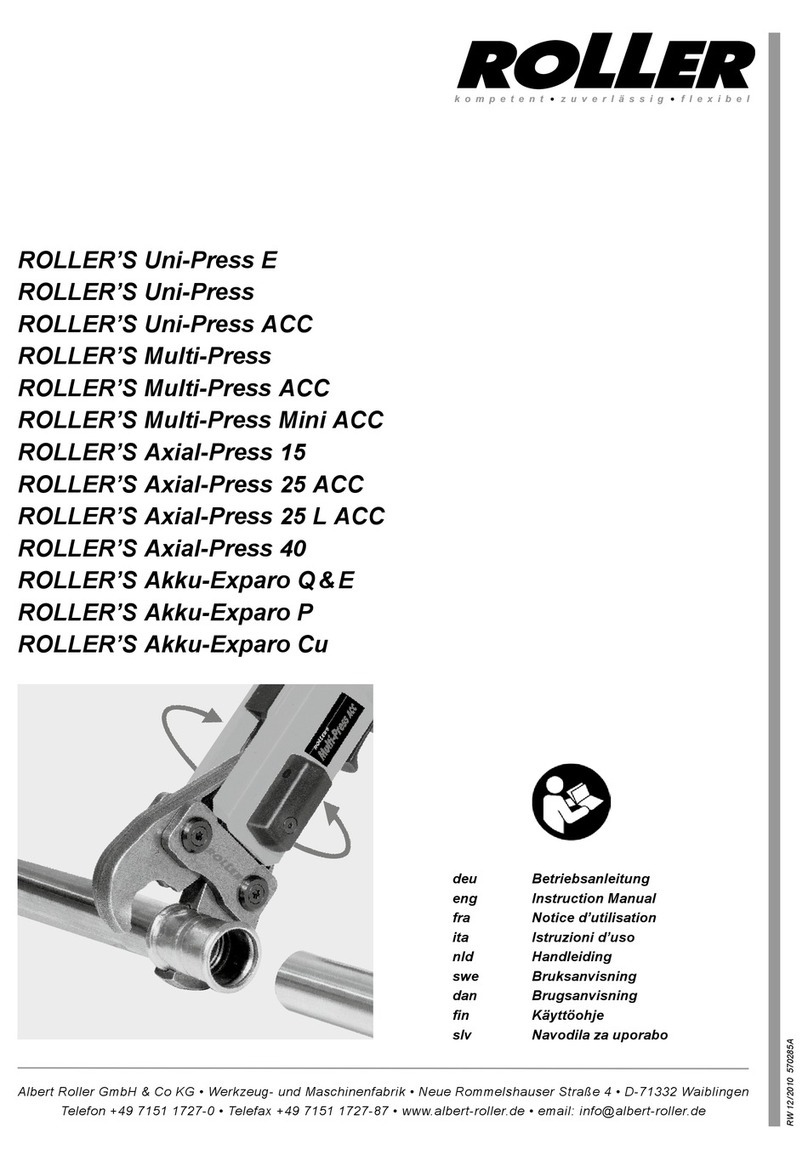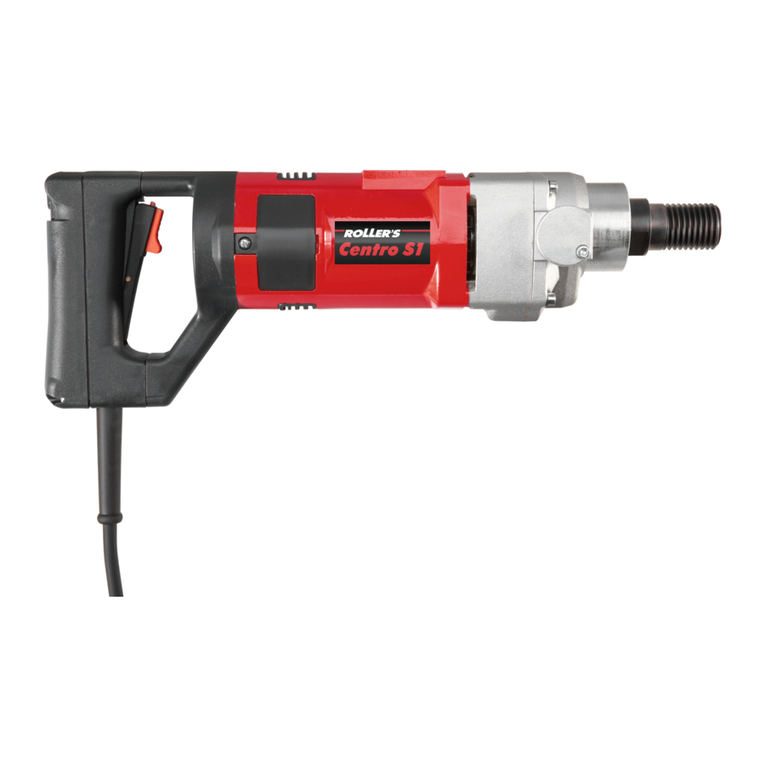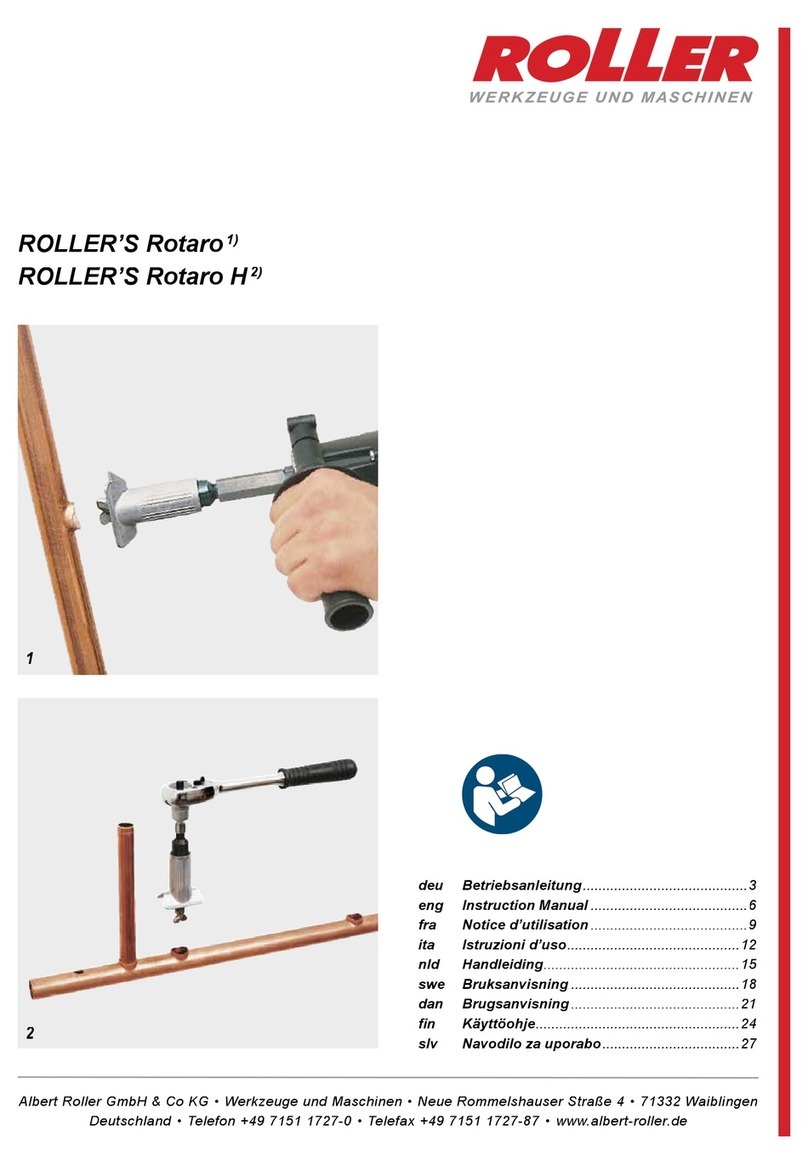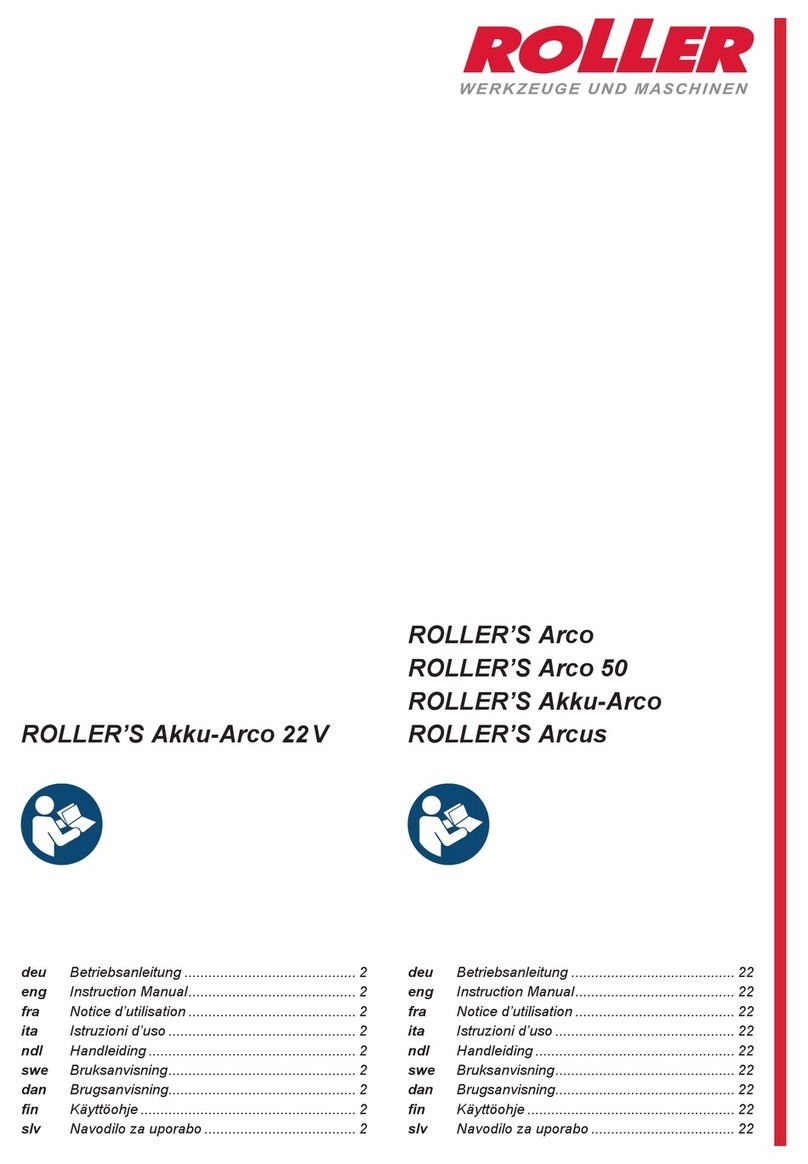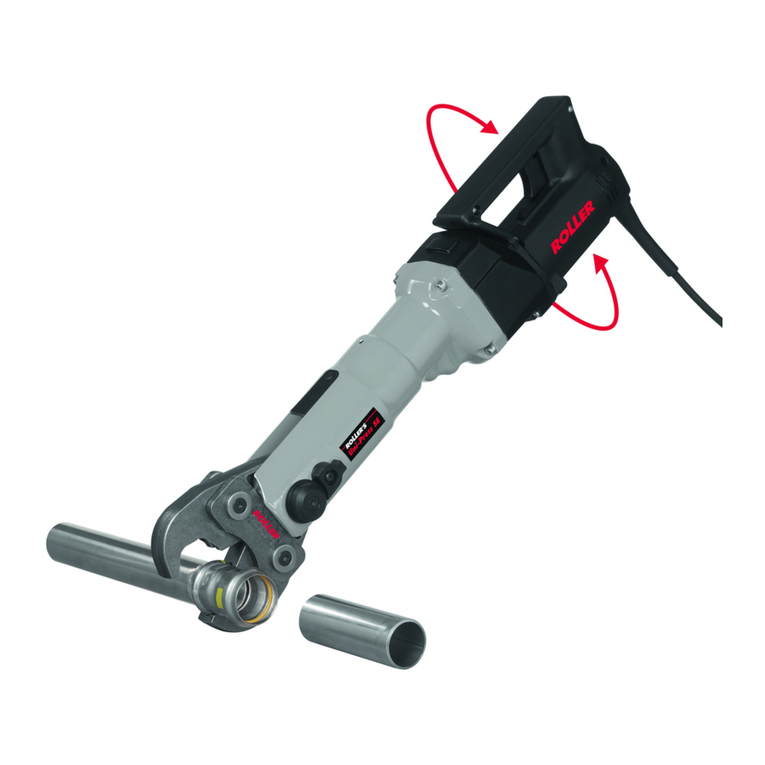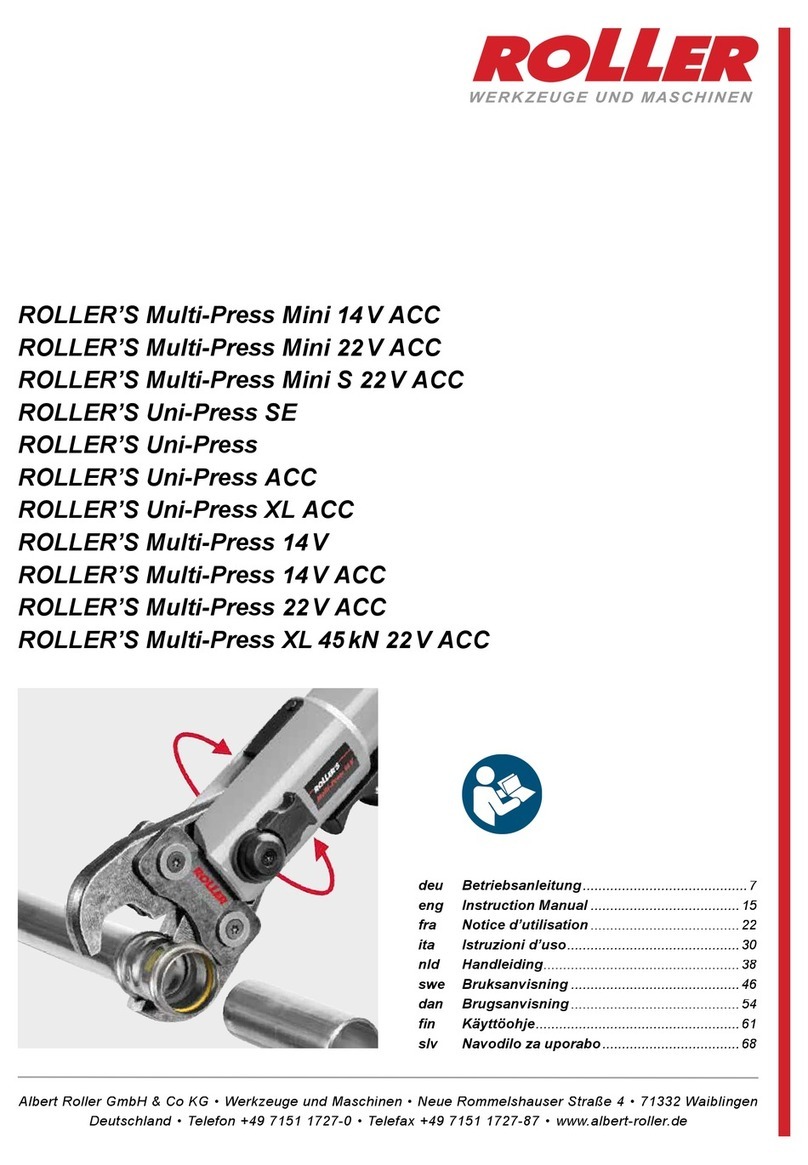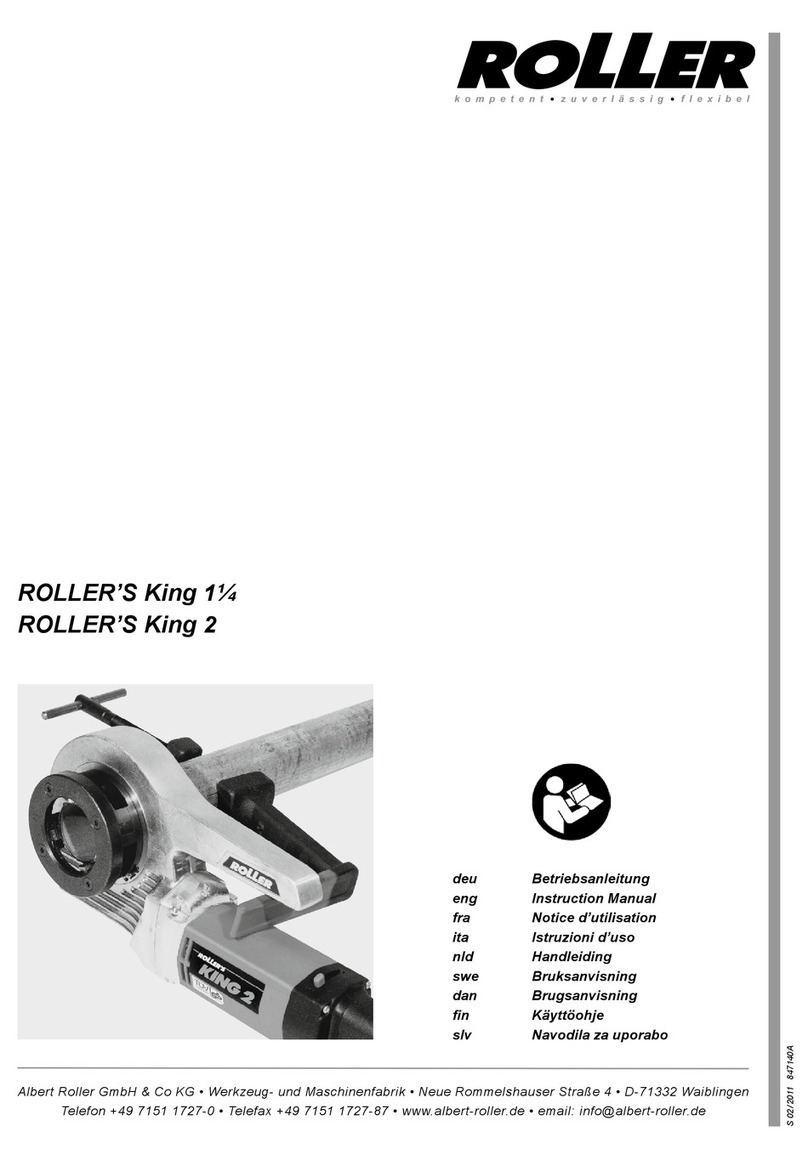
Originalbetriebsanleitung
Allgemeine Sicherheitshinweise für Elektrowerkzeuge
WARNUNG
Lesen Sie alle Sicherheitshinweise, Anweisungen, Bebilderungen und tech-
nischen Daten, mit denen dieses Elektrowerkzeug versehen ist. Versäumnisse
bei der Einhaltung der nachfolgenden Anweisungen können elektrischen Schlag,
Brand und/oder schwere Verletzungen verursachen.
Bewahren Sie alle Sicherheitshinweise und Anweisungen für die Zukunft auf.
Der in den Sicherheitshinweisen verwendete Begriff „Elektrowerkzeug“ bezieht sich
auf netzbetriebene Elektrowerkzeuge (mit Netzleitung) oder auf akkubetriebene
Elektrowerkzeuge (ohne Netzleitung).
1) Arbeitsplatzsicherheit
a) Halten Sie Ihren Arbeitsbereich sauber und gut beleuchtet. Unordnung oder
unbeleuchtete Arbeitsbereiche können zu Unfällen führen.
b) Arbeiten Sie mit dem Elektrowerkzeug nicht in explosionsgefährdeter
Umgebung, in der sich brennbare Flüssigkeiten, Gase oder Stäube befi nden.
Elektrowerkzeuge erzeugen Funken, die den Staub oder die Dämpfe entzünden
können.
c) Halten Sie Kinder und andere Personen während der Benutzung des Elektro-
werkzeugs fern. Bei Ablenkung können Sie die Kontrolle über das Elektrowerkzeug
verlieren.
2) Elektrische Sicherheit
a) Der Anschlussstecker des Elektrowerkzeugs muss in die Steckdose passen.
Der Stecker darf in keiner Weise verändert werden. Verwenden Sie keine
Adapterstecker gemeinsam mit schutzgeerdeten Elektrowerkzeugen.
Unveränderte Stecker und passende Steckdosen verringern das Risiko eines
elektrischen Schlages.
b) Vermeiden Sie Körperkontakt mit geerdeten Oberfl ächen wie von Rohren,
Heizungen, Herden und Kühlschränken. Es besteht ein erhöhtes Risiko durch
elektrischen Schlag, wenn Ihr Körper geerdet ist.
c) Halten Sie Elektrowerkzeuge von Regen oder Nässe fern. Das Eindringen von
Wasser in ein Elektrowerkzeug erhöht das Risiko eines elektrischen Schlages.
d) Zweckentfremden Sie die Anschlussleitung nicht, um das Elektrowerkzeug
zu tragen, aufzuhängen oder um den Stecker aus der Steckdose zu ziehen.
Halten Sie die Anschlussleitung fern von Hitze, Öl, scharfen Kanten oder
sich bewegenden Teilen. Beschädigte oder verwickelte Anschlussleitungen
erhöhen das Risiko eines elektrischen Schlages.
e) Wenn Sie mit einem Elektrowerkzeug im Freien arbeiten, verwenden Sie
nur Verlängerungsleitungen, die auch für den Außenbereich geeignet sind.
Die Anwendung einer für den Außenbereich geeigneten Verlängerungsleitung
verringert das Risiko eines elektrischen Schlages.
f) Wenn der Betrieb des Elektrowerkzeugs in feuchter Umgebung nicht
vermeidbar ist, verwenden Sie einen Fehlerstromschutzschalter. Der Einsatz
eines Fehlerstromschutzschalters vermindert das Risiko eines elektrischen
Schlages.
3) Sicherheit von Personen
a) Seien Sie aufmerksam, achten Sie darauf, was Sie tun, und gehen Sie
mit Vernunft an die Arbeit mit einem Elektrowerkzeug. Benutzen Sie kein
Elektrowerkzeug, wenn Sie müde sind oder unter dem Einfl uss von Drogen,
Alkohol oder Medikamenten stehen. Ein Moment der Unachtsamkeit beim
Gebrauch des Elektrowerkzeugs kann zu ernsthaften Verletzungen führen.
b) Tragen Sie persönliche Schutzausrüstung und immer eine Schutzbrille.
Das Tragen persönlicher Schutzausrüstung, wie Staubmaske, rutschfeste
Sicherheitsschuhe, Schutzhelm oder Gehörschutz, je nach Art und Einsatz des
Elektrowerkzeugs, verringert das Risiko von Verletzungen.
c) Vermeiden Sie eine unbeabsichtigte Inbetriebnahme. Vergewissern Sie sich,
dass das Elektrowerkzeug ausgeschaltet ist, bevor Sie es an die Stromver-
sorgung und/oder den Akku anschließen, es aufnehmen oder tragen. Wenn
Sie beim Tragen des Elektrowerkzeugs den Finger am Schalter haben oder das
Elektrowerkzeug eingeschaltet an die Stromversorgung anschließen, kann dies
zu Unfällen führen.
d) Entfernen Sie Einstellwerkzeuge oder Schraubenschlüssel, bevor Sie das
Elektrowerkzeug einschalten. Ein Werkzeug oder Schlüssel, der sich in einem
drehenden Teil des Elektrowerkzeugs befi ndet, kann zu Verletzungen führen.
e) Vermeiden Sie eine abnormale Körperhaltung. Sorgen Sie für einen sicheren
Stand und halten Sie jederzeit das Gleichgewicht. Dadurch können Sie das
Elektrowerkzeug in unerwarteten Situationen besser kontrollieren.
f) Tragen Sie geeignete Kleidung. Tragen Sie keine weite Kleidung oder
Schmuck. Halten Sie Haare und Kleidung fern von sich bewegenden Teilen.
Lockere Kleidung, Schmuck oder lange Haare können von sich bewegenden
Teilen erfasst werden.
g) Wenn Staubabsaug- und -auffangeinrichtungen montiert werden können,
sind diese anzuschließen und richtig zu verwenden. Verwendung einer
Staubabsaugung kann Gefährdungen durch Staub verringern.
h) Wiegen Sie sich nicht in falscher Sicherheit und setzen Sie sich nicht über
die Sicherheitsregeln für Elektrowerkzeuge hinweg, auch wenn Sie nach
vielfachem Gebrauch mit dem Elektrowerkzeug vertraut sind. Achtloses
Handeln kann binnen Sekundenbruchteilen zu schweren Verletzungen führen.
4) Verwendung und Behandlung des Elektrowerkzeugs
a) Überlasten Sie das Elektrowerkzeug nicht. Verwenden Sie für Ihre Arbeit
das dafür bestimmte Elektrowerkzeug. Mit dem passenden Elektrowerkzeug
arbeiten Sie besser und sicherer im angegebenen Leistungsbereich.
b) Benutzen Sie kein Elektrowerkzeug, dessen Schalter defekt ist. Ein Elek-
trowerkzeug, das sich nicht mehr ein- oder ausschalten lässt, ist gefährlich und
muss repariert werden.
c) Ziehen Sie den Stecker aus der Steckdose und/oder entfernen Sie einen
abnehmbaren Akku, bevor Sie Geräteeinstellungen vornehmen, Einsatzwerk-
zeugteile wechseln oder das Elektrowerkzeug weglegen. Diese Vorsichts-
maßnahme verhindert den unbeabsichtigten Start des Elektrowerkzeugs.
d) Bewahren Sie unbenutzte Elektrowerkzeuge außerhalb der Reichweite von
Kindern auf. Lassen Sie keine Personen das Elektrowerkzeug benutzen,
die mit diesem nicht vertraut sind oder diese Anweisungen nicht gelesen
haben. Elektrowerkzeuge sind gefährlich, wenn Sie von unerfahrenen Personen
benutzt werden.
e) Pfl egen Sie Elektrowerkzeuge und Einsatzwerkzeug mit Sorgfalt. Kont-
rollieren Sie, ob bewegliche Teile einwandfrei funktionieren und nicht
klemmen, ob Teile gebrochen oder so beschädigt sind, dass die Funktion
des Elektrowerkzeugs beeinträchtigt ist. Lassen Sie beschädigte Teile vor
dem Einsatz des Elektrowerkzeuges reparieren. Viele Unfälle haben ihre
Ursache in schlecht gewarteten Elektrowerkzeugen.
f) Halten Sie Schneidwerkzeuge scharf und sauber. Sorgfältig gepfl egte Schneid-
werkzeuge mit scharfen Schneidkanten verklemmen sich weniger und sind leichter
zu führen.
g) Verwenden Sie Elektrowerkzeug, Einsatzwerkzeug, Einsatzwerkzeuge
usw. entsprechend diesen Anweisungen. Berücksichtigen Sie dabei die
Arbeitsbedingungen und die auszuführende Tätigkeit. Der Gebrauch von
Elektrowerkzeugen für andere als die vorgesehenen Anwendungen kann zu
gefährlichen Situationen führen.
h) Halten Sie Griffe und Grifffl ächen trocken, sauber und frei von Öl und Fett.
Rutschige Griffe und Grifffl ächen erlauben keine sichere Bedienung und Kontrolle
des Elektrowerkzeugs in unvorhergesehenen Situationen.
5) Verwendung und Behandlung des Akkuwerkzeugs
a) Laden Sie die Akkus nur mit Ladegeräten auf, die vom Hersteller empfohlen
werden. Durch ein Ladegerät, das für eine bestimmte Art von Akkus geeignet
ist, besteht Brandgefahr, wenn es mit anderen Akkus verwendet wird.
b) Verwenden Sie nur die dafür vorgesehenen Akkus in den Elektrowerkzeugen.
Der Gebrauch von anderen Akkus kann zu Verletzungen und Brandgefahr führen.
c) Halten Sie den nicht benutzten Akku fern von Büroklammern, Münzen,
Schlüsseln, Nägeln, Schrauben oder anderen kleinen Metallgegenständen,
die eine Überbrückung der Kontakte verursachen könnten. Ein Kurzschluss
zwischen den Akkukontakten kann Verbrennungen oder Feuer zur Folge haben.
d) Bei falscher Anwendung kann Flüssigkeit aus dem Akku austreten. Vermeiden
Sie den Kontakt damit. Bei zufälligem Kontakt mit Wasser abspülen. Wenn
die Flüssigkeit in die Augen kommt, nehmen Sie zusätzlich ärztliche Hilfe
in Anspruch. Austretende Akkufl üssigkeit kann zu Hautreizungen oder Verbren-
nungen führen.
e) Benutzen Sie keinen beschädigten oder veränderten Akku. Beschädigte oder
veränderte Akkus können sich unvorhersehbar verhalten und zu Feuer, Explosion
oder Verletzungsgefahr führen.
f) Setzen Sie einen Akku keinem Feuer oder zu hohen Temperaturen aus.
Feuer oder Temperaturen über 130°C können eine Explosion hervorrufen.
g) Befolgen Sie alle Anweisungen zum Laden und laden Sie den Akku oder das
Akkuwerkzeug niemals außerhalb des in der Betriebsanleitung angegebenen
Temperaturbereichs. Falsches Laden oder Laden außerhalb des zugelassenen
Temperaturbereichs kann den Akku zerstören und die Brandgefahr erhöhen.
6) Service
a) Lassen Sie Ihr Elektrowerkzeug nur von qualifi ziertem Fachpersonal und
nur mit Original-Ersatzteilen reparieren. Damit wird sichergestellt, dass die
Sicherheit des Elektrowerkzeugs erhalten bleibt.
b) Warten Sie niemals beschädigte Akkus. Sämtliche Wartung von Akkus sollte
nur durch den Hersteller oder bevollmächtigte Kundendienststellen erfolgen.
Sicherheitshinweise für Akku-Rohrbieger
WARNUNG
Lesen Sie alle Sicherheitshinweise, Anweisungen, Bebilderungen und tech-
nischen Daten, mit denen dieses Elektrowerkzeug versehen ist. Versäumnisse
bei der Einhaltung der nachfolgenden Anweisungen können elektrischen Schlag,
Brand und/oder schwere Verletzungen verursachen.
Bewahren Sie alle Sicherheitshinweise und Anweisungen für die Zukunft auf.
● Greifen Sie während dem Biegen nicht zwischen Rohr, Gleitstücke (8) und
Biegesegment (11). Es besteht Verletzungsgefahr.
● Schützen Sie arbeitsbegleitende Personen während dem Biegen vor dem
sich bewegenden Rohr. Es besteht Verletzungsgefahr.
3
1 Rückstelltaste
2 Akku
3 Gestufte Ladezustandsanzeige
4 Maschinenzustandskontrolle
5 Taste mit Batteriesymbol
6 Gleitstückträger
7 Biegerantrieb
8 Gleitstücke
9 Vorschubkolben
10 Flügelschraube
11 Biegesegment
12 Sicherheits-Tippschalter
13 Markierungen für maßgenaues Biegen
14 Schaltergriff
